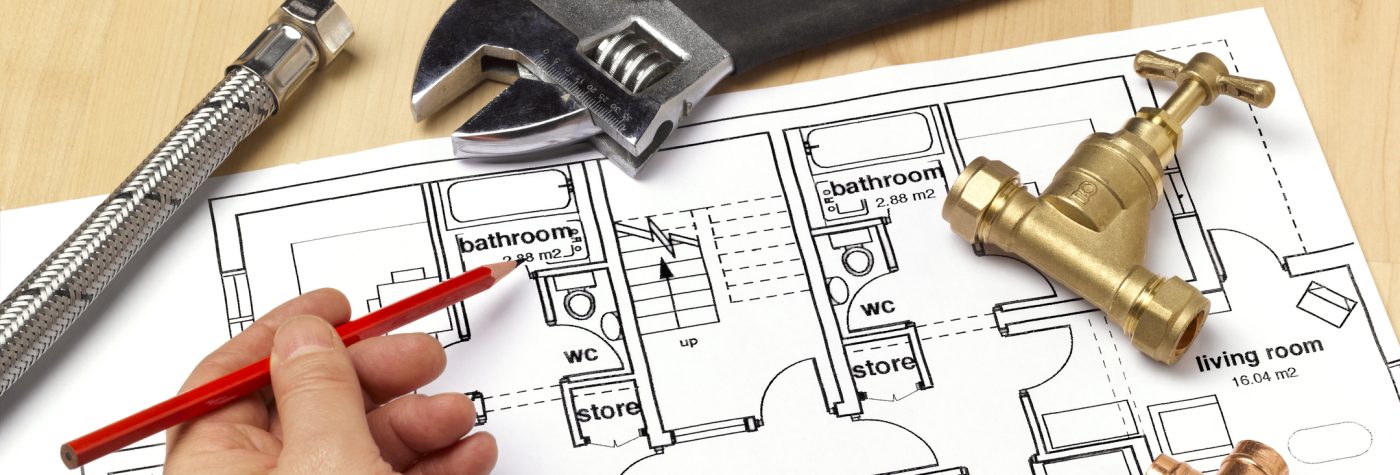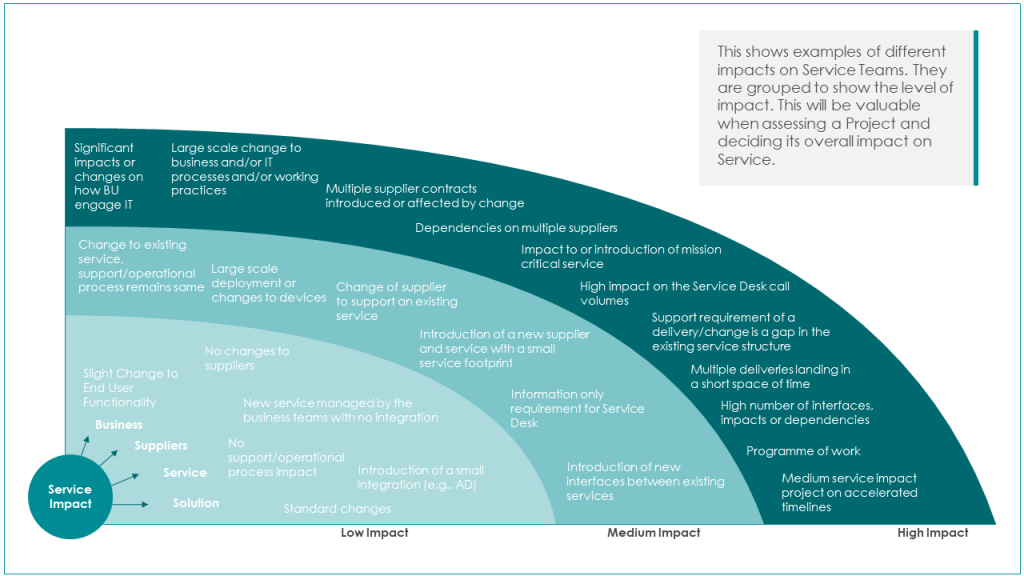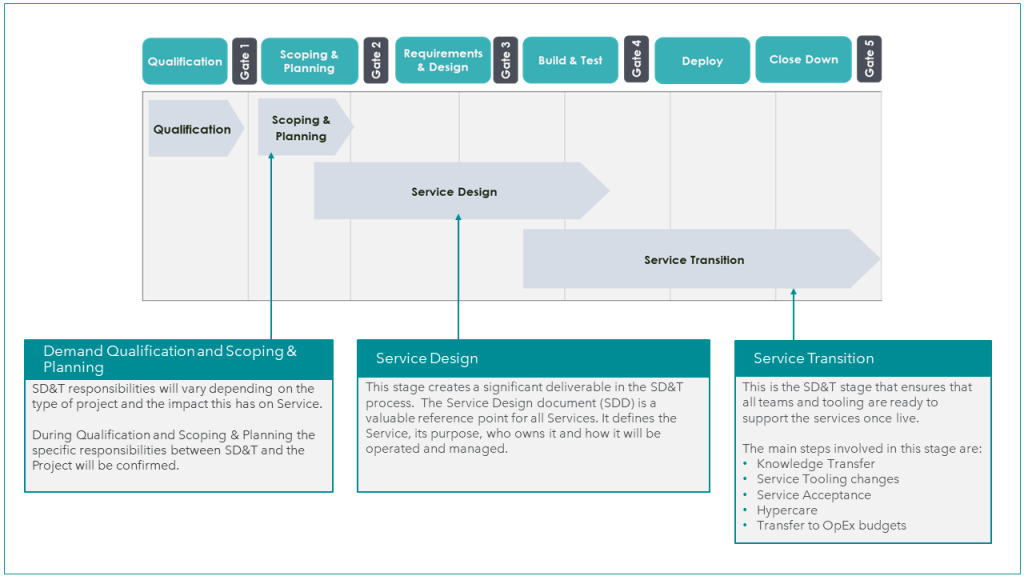Strategic imperatives: Rethinking Service Design & Transition in Project Management

key fact
Effective Service Design contributes to the reduction of incidents and service disruptions. Well-designed services are more likely to meet user needs and expectations, leading to improved overall service stability.
Service Design, Service Transition, Service Design & Transition, Service Introduction, Project Assurance, Operational Readiness…. The activity that ensures that all the necessary elements are in place to effectively operate a new / amended service has several names. Regardless of name, organisations experience similar challenges.
- Project Managers get ‘charged’ to use a service that they see as adding limited value. A tax like tick box exercise, often performed close to ‘go live’, throwing curve balls in the way of delivery.
- Operations teams get frustrated that they are handed a box of frogs, and spend the next few months trying to put the frogs back in the box while the project has long closed.
It doesn’t need to be like this. In this article, we explore how to create a Project Service Design & Transition service that people want to use, and one that adds material value to the success of the original business case.
Imagine this scenario: You want to build an extension to your house, adding a new bathroom and bedroom. First, you need to understand the current architecture to ensure joist integration and appropriate weight distribution. By adding extra floor space, you’ll need to ensure it can continue to be heated and cooled, and that you have the annual budget available to be able to do so. Additional plumbing means more pipework… potentially leading to more breakdowns, so you may need to consider buying emergency call-out insurance. You’ll need to assess whether you can still live in your house during construction and have a clear plan of how and when the builders will hand over to you to start to enjoy your extra space.
All this forms part of Service Design & Transition. We break this down into five key areas:
1. Integrate Service Design & Transition within your Project Management Framework
Firstly, a project management framework is needed. We’ve outlined below a typical project management framework (Figure 1) and overlayed where the three key stages of Project Service Design & Transition fit it.
SD&T – Key stages and Alignment Project process
Figure 1 – Project management framework
What about Agile, DevOps and CI/CD?
Project Management Frameworks should cater for different delivery methods including Waterfall and Agile, with the latter being a longer-term ‘Product Investment’ approach with value increments delivered iteratively in a cycle between the ‘requirements’ and ‘deploy’ phases. Therefore, unless the value increment impacts the Service Design (which is rare), the value increment need only engage with Service Change Management, and not the wider Project Service Transition Assurance activities. This creates an effective balance between speed of delivery and required governance.
2. Define Service Design standards
A critical service to the business will require a different design compared to a non-critical service e.g. automated active-to-active failover solution, automated monitoring and alerting, stringent third-party support arrangements.
A service storing personal data will require a different design compared to one that is not storing personal data.
Regardless of criticality or the presence of personal data, etc, some standards will be common to all services e.g. the requirement for there to be a service name, a Service Owner, a mechanism for users to obtain support, etc. Rather than designing these for each project and service, they should be presented as off-the shelf standards. This changes the dynamic of the Service Design work from ‘creating’ the design to ‘plugging in’ to an existing design.
Pre-defining design standards will provide clarity to projects of not just the design that must be delivered, but also the likely costs involved to build and operate that service. This influences the business case and is therefore an integral step in the qualification phase. Consequently, it helps set the scope of the project delivery at the outset of the project (if indeed the business case still stacks up), reducing the prospect of those friction inducing and time-consuming surprises later on.
See figure 2 below for further consideration examples.
 Figure 2 – Examples of service impacts – assessing and planning projects
Figure 2 – Examples of service impacts – assessing and planning projects
3. Objectively assess Service Design needs for each project
When standards are in place, a mechanism is required to objectively confirm which design is required for each project.
For example, assessing the criticality of the service is usually achieved via a Business Impact Assessment – what would the impact be to the business if this service were to be unavailable for 1 minute, 1 hour, 1 day, etc. This includes criteria such as lost profit, customer impact, employee impact, and legislative / regulative impact. Kudos to a pet care organisation we had the privilege of working with which included ‘pet welfare’ as their number one criteria.
We have a blueprint available that encompasses over 70 design standards, together with objective assessment criteria. This resource assists in identifying all Service Design requirements for each new or amended service.
4. Provide Project Service Design & Transition support options
Some less complex projects with experienced Project Managers may not require as much input from Project Service Design & Transition compared to more complex projects with less experienced Project Managers.
Performing an assessment at the start of a project to determine the expected support needs and estimate the associated costs enables effective project planning.
The support options typically fall into three areas:
- Self-serve (no cost) – The project takes responsibility for completing all Project Service Design & Transition Assurance activities, with the central Service Transition team performing reviews and approvals at the relevant stage gates only (as defined in your project management framework). This service is usually funded with Run resource, and therefore no charge to projects.
- Assist (£) – The Service Transition team assist the Project in completing the relevant assessments at each stage gate and provide advice on how to deliver. This service is usually funded with Change resource, with the cost agreed upfront between Service Transition and the Project.
- Execute (£££) – The Project ‘purchase’ dedicated Service Transition resource to be part of the project team (still following the pre-defined design standards). This resource takes on responsibility for all Project Service Design & Transition activities (with the Project Manager retaining oversight). This service is usually funded with Change resource, with the cost agreed upfront between Service Transition and the Project. However, a separate Service Transition resource would need to conduct the stage gate reviews and approvals (akin to type 1 above) to ensure a degree of independence.
Using objective criteria helps, and we have a template available. However, this can be overridden upwards… for example, the assessment may conclude that an ‘Assisted’ service would be sufficient. However, the Project Manager (and Sponsor) would prefer the additional assurance (no pun intended) that the ‘Execution’ service offers, and therefore elects to proceed with that service instead (funding accordingly).
5. Define Service Transition standards
The moment a new/amended service moves to production could make or break the ability to realise the targeted benefits. Providing Project Managers with clear standards reduces effort and increases quality.
These standards should include:
- Deployment / cut-over plans – who is going to do what, and when, who will provide oversight and signoff at each key milestone, what degree of commission testing will be performed, who needs to be informed as the deployment progresses, what are the escalation paths, etc.?
- Early life support / hypercare plans – how long will the project remain in place to address any issues that occur post go live, how will these be reported and resolved, who needs to be involved, who needs to be informed, what is the exit criteria, etc.?
If of interest, we have blueprints available for the above.
All the above should link neatly to your Service Change Management practices, significantly reducing the prospect of Change Advisory Board (CAB) rejections.
In addition, the completed Service Design should not become shelf ware. All information should be added to the appropriate field in your Service Catalogue for ongoing consumption and management.
Implementing a new or amended service is challenging. Service Design and Transition need not be. Designed well, a flexible Service Design & Transition service that integrates with existing standards:
a) Reduces the effort required, and,
b) Improves the prospects of a quality delivery…
… leading to improved return on your investments.
If you would like to speak to us further regarding this insight or require support with Service Management, we’d be happy to help by sharing our experiences, accelerator blueprints and knowledge to create a tailored recommendation to meet your specific needs. Send your enquiry to contact@masonadvisory.com to discuss further.
If you want to find out more about our services click here.
